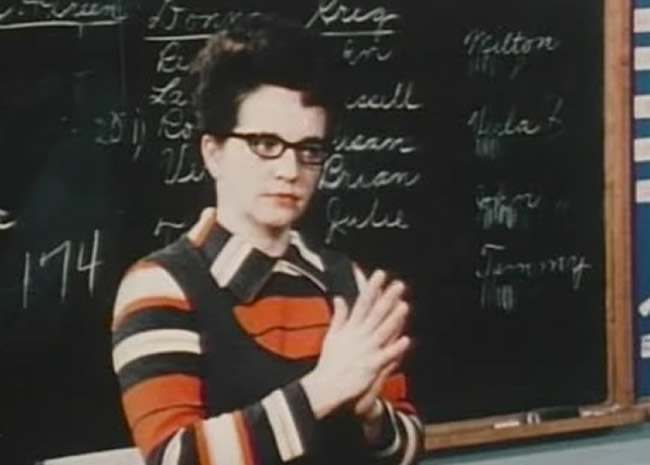LET’s talk about discrimination.YouTuber LudwingMedia harks back to 1970. Blue-eyed people are smarter than brown-eyed people. Or is it the other way around?
Ms. Jane Elliott’s “brown eyes, blue eyes” experiment in 1970 (the third one after her first in 1968). This “Eye of Storm” documentary was made by William Peters in 1970 for ABC News and later included in the documentary “A Class Divided” (1985), which included a class reunion (of 1984.)
The most telling moment is when Russell used “brown eyes” as a derogatory term to call John name, only a couple of hours through. Though, the experiment was too short to allow it to get to the point when a “brown-eyes” person does so to another fellow “brown-eyes” person.
From her website:
In 1968, in response to the assassination of Dr. Martin Luther King Jr., a third grade teacher, Ms. Jane Elliott, in all-white, all-Christian, Riceville, Iowa, involved her students in an exercise in discrimination based on eye color. It was her attempt to help them to understand some of the reasons why Black people were taking to the streets and demanding equitable treatment with whites.
She went on the road:
She took the Brown Eyes/Blue Eyes exercise, and other work, out to colleges, and government, professional and community groups across the world. In these training sessions, she usually puts the brown eyed attendees in the superior position. As these groups are more likely to be mixed race, this ensures that the people feeling the discrimination are more likely to be white, who are less likely to be used to it. She uses choice of language and tone, removal of basic rights (such as being allowed to speak without permission) and a constant shifting of rules to discomfort the blue-eyed participants. At the same time she uses positive language, praise and encouragement to the brown-eyed people. Even assertive, intelligent professionals have expressed their surprise at how quickly they start to mirror the trainer’s behaviour, and how thoroughly they become affected by this technique, even at a two hour seminar. Jane Elliott then hammers home the point: people who are the subject of real discriminations cannot call a halt to the misery and frustration at the end of the afternoon. Jane Elliott started her exercise to point out racial discrimination: now she uses it to highlight sexism, ageism and homophobia too.
She has more to say:
Would you like to support Flashbak?
Please consider making a donation to our site. We don't want to rely on ads to bring you the best of visual culture. You can also support us by signing up to our Mailing List. And you can also follow us on Facebook, Instagram and Twitter. For great art and culture delivered to your door, visit our shop.







